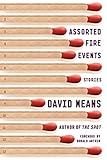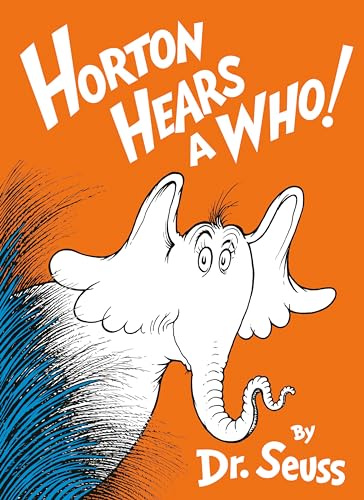Although David Means is one of our best writers of sentences, one would be hard-pressed to commit any of those sentences to memory. His lines unfold and refold upon themselves like animate origami, offering lush visual imagery and word choice as pointed as an awl. Take this fragment of description from “The Tree Line, Kansas, 1934”: “The way the road spread out of the vanishing point, exposing its mouth to the farm while, at the same time, tapering back into the quivers of heat in a manner that made it hard, and at times impossible, to watch.” That’s not some lyrical outburst in the stream of his stories. It’s closer to the median. The complexity of his sentences makes them virtually unmemorizable. They flit around you like the mating dance of a bird whose movements you’ll never afterward be able to retrace.
 But the one David Means sentence I’ve never been able to forget comes midway through his collection Assorted Fire Events: “I don’t want anyone to die in my stories anymore.” By the time it arrives, Means’s stories have given us a distraught widower beaten and left to die in a train tunnel, a brother who drowns in an capsized canoe, a toddler plunging through her back lawn into a creek concealed by a shady construction company. A high school misfit has suffocated in a sandslide. The collection is a register of deaths that are exotic and pedestrian at once, arising from small miscalculations and unseen hazards. And it’s a bit grisly.
But the one David Means sentence I’ve never been able to forget comes midway through his collection Assorted Fire Events: “I don’t want anyone to die in my stories anymore.” By the time it arrives, Means’s stories have given us a distraught widower beaten and left to die in a train tunnel, a brother who drowns in an capsized canoe, a toddler plunging through her back lawn into a creek concealed by a shady construction company. A high school misfit has suffocated in a sandslide. The collection is a register of deaths that are exotic and pedestrian at once, arising from small miscalculations and unseen hazards. And it’s a bit grisly.
This line from Means shows up right in the middle of the collection, in a brief, lyric story—almost more of a prose poem—called “What I Hope For.” The first time I read it I dismissed it as a metafictional gimmick. I rushed past it in my hunt for more of the high-grade sentence work that makes his writing singular. But after finishing the collection, and in the years since, it’s hung onto me as one of the sincerest lines in literature.
 I don’t want anyone to die in my stories anymore. The statement is an intention, but also a hope. It has the potential for failure. It acknowledges that Means, whose stories leap so acrobatically in time and point of view, may be powerless to realize that hope. The line is probably more heartbreaking for writers than for readers. We are the ones who have imagined our characters into existence, and their plights as well. Shouldn’t we be able to do better by them? I’ve wondered this as I try to write stories that don’t end with a character dying, or shaming himself, or giving up hope, or giving up art. What does it mean when I have a wholesome evening reading my kids Horton Hears a Who before bed, then retreat to the living room to write a story about the purposeful destruction of biodiversity?
I don’t want anyone to die in my stories anymore. The statement is an intention, but also a hope. It has the potential for failure. It acknowledges that Means, whose stories leap so acrobatically in time and point of view, may be powerless to realize that hope. The line is probably more heartbreaking for writers than for readers. We are the ones who have imagined our characters into existence, and their plights as well. Shouldn’t we be able to do better by them? I’ve wondered this as I try to write stories that don’t end with a character dying, or shaming himself, or giving up hope, or giving up art. What does it mean when I have a wholesome evening reading my kids Horton Hears a Who before bed, then retreat to the living room to write a story about the purposeful destruction of biodiversity?
One school of thought says the author is the master of the story. Nabokov likened his characters to galley slaves. A more popular school says the story is the master of the author. As Mario Vargas Llosa says, “It becomes apparent that the author cannot mold characters as he pleases, that they have a certain autonomy.” The line from “What I Hope For” posits an act of creation almost in line with Michelangelo’s predestined work of art: a work that cannot be changed at will but that might, with enough heart, be influenced.
“From here on out it has to be glorious life,” Means continues in “What I Hope For.” And what does it mean if it isn’t? Is that why those two lines ring with something like anguish? Why the fourth wall is ripped open so briefly but so bracingly? As dangerous as it is to psychoanalyze an author by his work, I do theorize that an author sometimes has to grapple with what it means when his imaginings all lead to those railroad incidents and drownings and sandslides. If he can’t prevent all that wreckage, maybe the wreckage is inside him.
Perhaps it is just a metafictional trick, of course. Means is adept at so many levels it’s hard to put anything past him. But I’ll choose to believe that he’s honestly contending with the direction of his art. That says more about me than it does about him, but I find myself asking sometimes as I walk down a supermarket aisle: Why, when I live a conventional and largely satisfied suburban life, do my stories tend toward dread and disaster? I ask myself the question my wife asks me—why can’t I write something with a happy ending?
I can only say that I’ve tried to nudge the rolling boulder out of the path of the character, but it is too heavy. Whatever the splinter is in me that drives my work to dark places, I have not been able to pluck it out. But I would not say that I’ve stopped trying.
In the years since I first read Assorted Fire Events, I forgot whether Means was able to accomplish his goal. Whether he had kept them alive. I reread it recently, hoping with the author that no one would die in the coming stories.
Here’s what I rediscovered in the second half of the collection: A homeless man is beaten to death after interrupting a wedding; a mean-spirited truck driver in a critical care unit dies of a heart attack a few days after yelling at the family of a young Israeli girl, who also dies; a man reflecting on the premature death of his son drives into a movie set, killing the director; a woodcutter takes his own life; and in the title story, the “Assorted Fire Events” include a man setting a live dog on fire and the narrator’s aunt immolating herself in her car.
So reading this collection can induce a certain amount of despair. A cynic might ask what the point is in adding to sum total despair in the world. A certain answer would be that those of us with that splinter of hopelessness lodged in our brains are helpless to do anything but share it. One could even say that immersing ourselves in such tragedies has its own logic. “The plot of fire is nebulous and serene,” Means writes in the title story, “wildly fanatic and calm at the same time, trailing up curtains and along the undersides of carpet padding, taking its own sweet time and then conversely becoming diametric, logarithmic.”
But I’ve come to believe there is a less cynical answer, and it comes from source of the despair in these stories, which is not the tragedies but the lives that precede them. The boy suffocated by a sandslide in “Sleeping Bear Lament” is remembered by a narrator who, in a moment of random adolescent cruelty, knocked out the boy’s front teeth with a trumpet mouthpiece. That’s a shame memory that won’t let the narrator go. Years later it becomes a lament, after the brief disappearance and reappearance of a friend, for the better person he could have been, the friend he wasn’t. Not exactly hopeful, I know, but it does something to keep the random death by sandslide from falling into the mouth of time. In “The Gesture Hunter,” the narrator’s ramming of the movie set could be comically absurd. The director dies as a result and the narrator, presumably from jail, does not have much ahead of him in life.
But he has the past, the parts of his life that did mean something—a gesture, a memory trigger, of his son fly fishing. And much, much further back, even this perfect memory of his baby son in the bath: “It seized me and sent me reeling, knowing full well that what I was seeing would never repeat itself and was certainly the most beautiful sight in the world. The water boiled up around his fist. The slick oily light slid off his skin. His smiling face looked up at me, and his tiny fleck of hair lay pasted to his scalp while my wife, behind me in the hall, softly folded a towel over her arm and outside the summer air moved, tainted with lavender.” That is where the story ends, though in the realm of emotional cause and effect, it’s more where the story begins.
Say we agree that these stories could not be otherwise. In that case, all the gymnastics Means does with time and memory and consciousness show us how attempting to make sense of them opens up all the beauty of the world. Tragedy exists in the world, but it is surrounded by meaning. Characters in our stories will die, even when we don’t want them to. Yet there is glorious life—even if sometimes, we have to look back in time to see it.
Image: Flickr/Quinn Dombrowski




